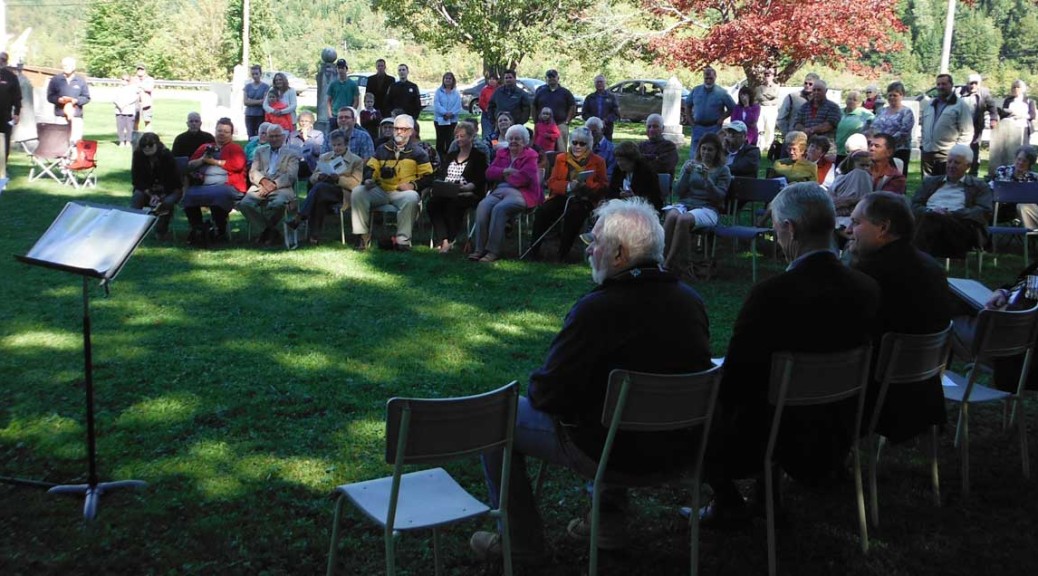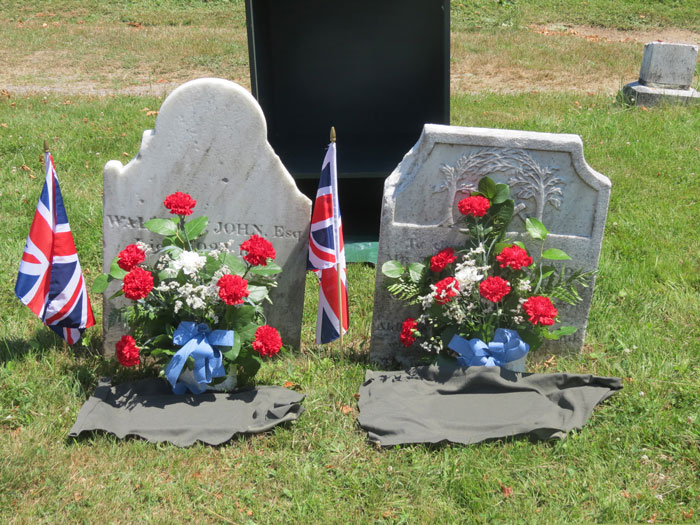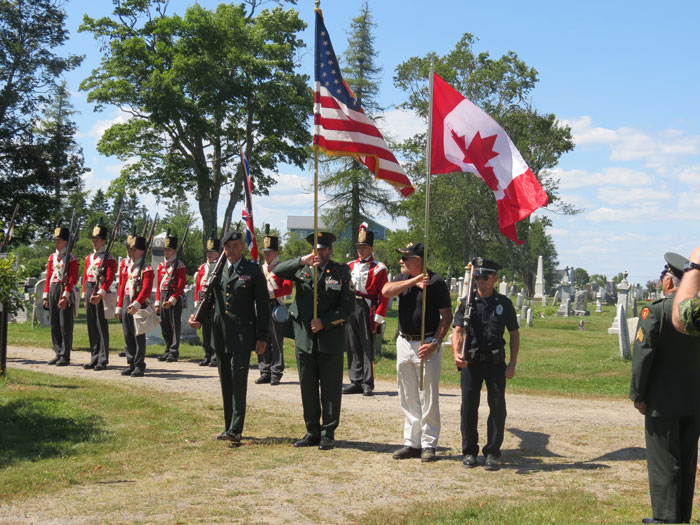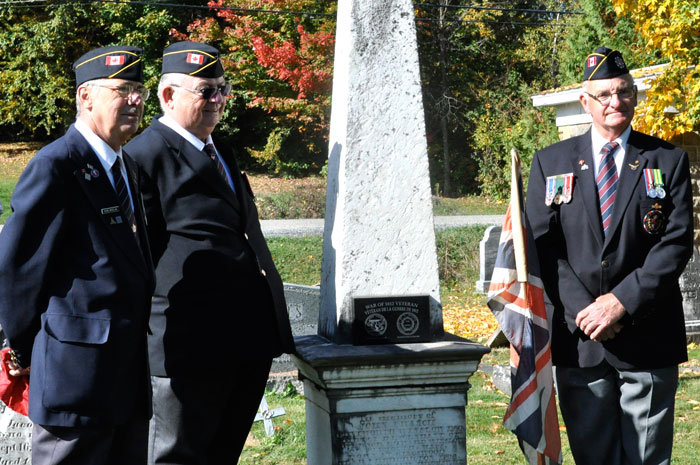This application is sponsored by King’s Landing Historical Settlement, New Brunswick.
Daniel Morehouse was born on 26 November 1758 in Redding, Connecticut. His parents were Joseph Morehouse and Elizabeth Silliman, the daughter of Nathanial Silliman. He had seven siblings – five brothers and two sisters. They were part of a large family, of nearly 415 people, that had been in Connecticut for five generations. When the American Revolution started, it appears that within his immediate family only Daniel and three of his brothers became Loyalists although other members of the extended family did so as well.
Daniel was attending King’s College (later Yale) in 1776. In response to Patriot attacks on Loyalists, and the seizing of his horse, he joined the British army in New York in either 1775 or 1776. There, he enlisted in the Queen’s Rangers, a Provincial regiment commanded by John Graves Simcoe, that was recruited primarily from Connecticut and New York Loyalists. He entered as a Volunteer and was promoted to Sergeant in 1779. During his service, he was employed as a rifleman, a cavalryman and as an infantryman. The regiment saw action in some of the fiercest battles of both the Northern, or New England, and Southern, or South Carolina and Virginia, Campaigns. They were included in Cornwallis’ surrender at Yorktown in 1781. Following that, they formed part of the garrison on Long Island. This is likely where he met Jane Gill. They were married in New York on 30 April 1783. They would eventually have five children. In the same year, he was made a Quartermaster. Following the war, this entitled him to a pension of £40 and a grant of land of 500 acres.
The Queen’s Rangers were transported to Parrtown (Saint John) as part of the Fall fleet in 1783. After some false starts, Daniel received a grant of 500 acres of land in what is now Queensbury Parish, York County, New Brunswick. He proceeded to develop his land and purchase more using his pension money. In 1792, John Graves Simcoe, his former Commanding Officer, reformed the Queen’s Rangers for service in Upper Canada. Daniel was asked to join but it appears that he declined. However, he had not put his miliary service entirely behind him. In 1807, war clouds were gathering and conflict between Great Britain and the United States seemed likely. As tensions rose, there was concern about a possible invasion of New Brunswick by the Americans. Working on orders from the Colonial Office, Colonel John Saunders embodied elements of the militia to help defend the province. A battalion of Volunteer Militia Rangers was created from them. Daniel was made the captain of one of the companies. He was stationed at Meductic on the St. John River. This post guarded the Eel River portage route that led to Maine. This route had been used during the American Revolution by Johnathan Eddy and John Allan as they retreated from their unsuccessful invasions of New Brunswick. As a reward for his service, Daniel was made a Justice of the Peace and a Magistrate for Queensbury parish.
While the threat of war eased in 1808, it returned as tensions continued to rise. Great Britain was at war with Napoleonic France and a by-product of this was deteriorating relations with the United States. Again, the government of New Brunswick sought to improve the militia for home defence. The 2nd Battalion, York County Militia, was created on 28 February 1810 and Daniel was appointed to be the Major Commandant of it. He held this post until 2 April 1818 when he retired. It was about this time that he started to build a new house that is now part of the King’s Landing Historical Settlement.
The War of 1812 began on 8 June 1812. Major Morehouse was instrumental in providing assistance to military activity along the upper Saint John River during the war. He was charged with guiding men of the 104th (New Brunswick) Regiment of Foot to their post at Eel River (Meductic) in July 1812, and drilled the men of the 104th at that station in October of that year. This post was garrisoned throughout the war. It was from this location that his son, Ensign George Morehouse, set out in January 1815 to “capture” Houlton, District of Maine.
The Morehouse farm lay astride the Grand Communications Route, the strategic transportation link between the Bay of Fundy and the St. Lawrence River. This route was used during the war for the movement of the 104th (New Brunswick) Regiment of Foot to Upper Canada during the winter of 1813. The following winter, a party of 250 Royal Navy officers and seamen and the 2nd/8th (King’s) Regiment of Foot passed over the same route. Daniel was mentioned in contemporary sources for the assistance that he provided to both the Royal Navy and the 2nd/8th as they passed by his farm. It is likely that he also assisted the 104th on their march. Security of this route was a concern and there were several reports of American agents operating in the area. Their goal appears to have been to interfere with the courier and mail services that travelled along this route. In a letter explaining his absence from a meeting in Fredericton, he stated that he had been delayed while he spent some time chasing a suspected American agent who was operating in the Woodstock area. The village of Houlton was just across the border in the District of Maine and it was thought that it was a refuge for these agents.
Post-war, Daniel continued with his militia, civic duties and farming responsibilities. He and Jane no doubt enjoyed their growing family with children and grandchildren. Jane died on 29 August 1829 at 72years of age. Daniel lived for another six years and died on 20 January 1835. His obituary tells his story best:
“At his residence, in Queensbury, County of York, Daniel Morehouse, Esquire, in the 77th year of his age, after a most painful and lingering illness, which he endured with the most exemplary patience, fortitude and resignation. Major Morehouse was one of that band of Loyalists who in the memorable year of 1783, relinquished the hopes and expectations of youth, and came to this province – where in the various relations of life, for the long period of half a century, he commanded universal respect and esteem. He was on the half pay of the Queen’s Rangers, and for many years an active, upright, and efficient Magistrate”.
The graves of Daniel and Jane Morehouse were relocated to Saint Clement’s cemetery when the original graves were flooded when the Mactaquac dam was built on the St. John River. The 2nd Battalion, York County Militia, is one of the predecessors of the Royal New Brunswick Regiment.
Gary Campbell, 17 May 2022
References:
Darrel N. Butler. “The History of the Morehouse Family” (1997). A background paper, written by the Chief Curator, on the history relating to the Morehouse house that is now located at Kings Landing, New Brunswick.
David Facey-Crowther. The New Brunswick Militia, 1787 – 1867. Fredericton: New Ireland Press and New Brunswick Historical Society, 1990.
Robert L. Dallison. A Neighbourly War: New Brunswick and the War of 1812. Fredericton: Goose Lane Editions and the New Brunswick Military Heritage Project, 2012.




